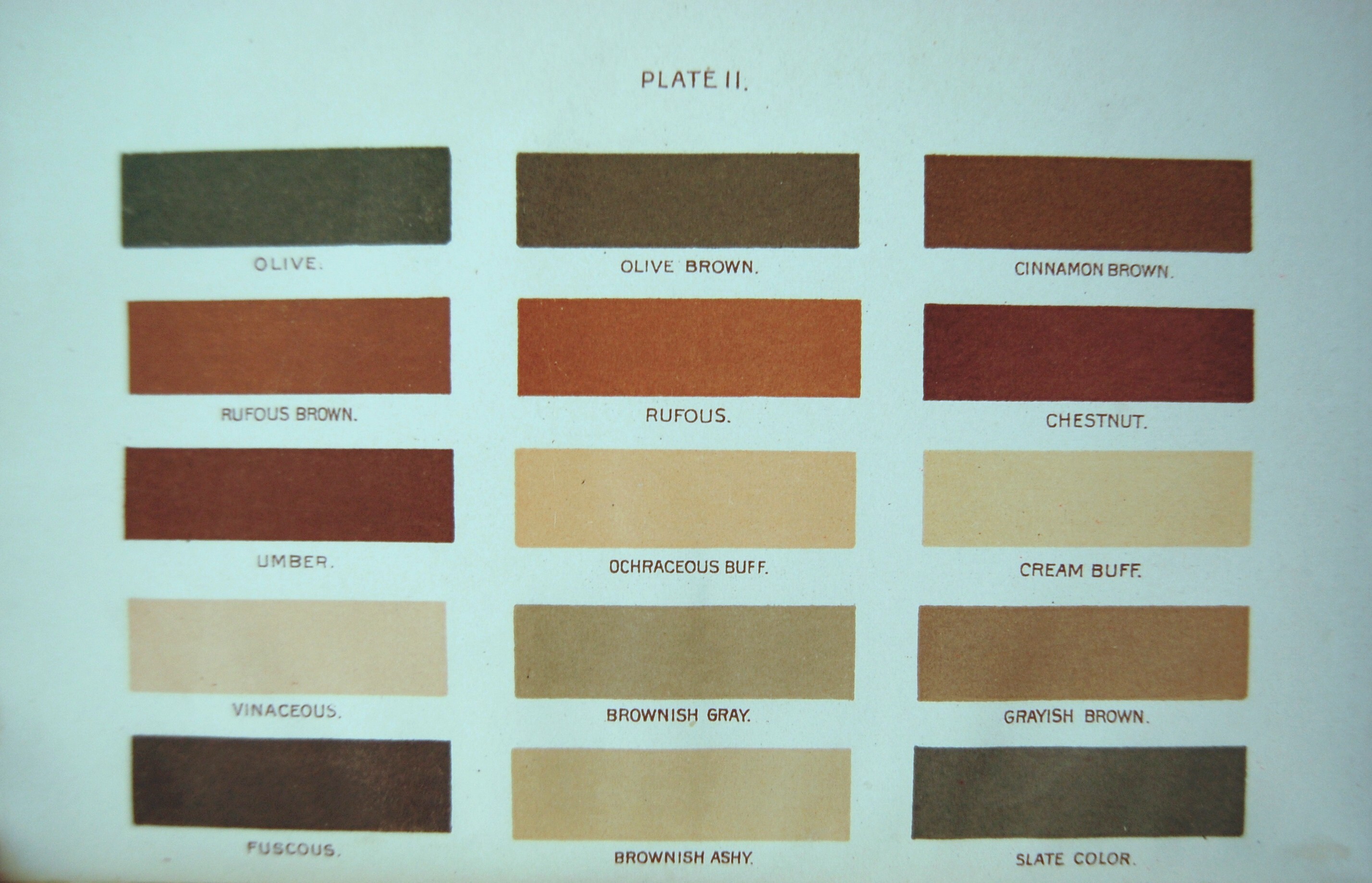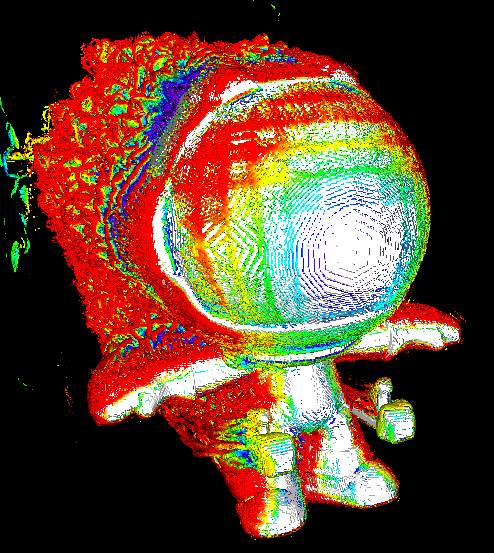my reasoning: the actual colors we can see -> the wavelengths that we can extrapolate to -> basically extrapolated wavelengths plus an ‘unpure-ness’ factor -> not even real wavelengths (ok well king blue and maybe lavender if I’m being generous could be)
Fuchsia gang where my boys at
Imagine taking about colors without the technique by which they are produced.
Also, did you just call black a real color when you are talking about wavelengths?
The problem with your statement is (not) fully understanding how our brains work at interpreting colors.
You mentioned yellow in this thread - our brains (not our eyes) see two different colors that they device to interpret as yellow, which is different to seeking a true yellow wavelength.
More of an everyday example of that is “white” (found under your mental illnesses) - you can buy cheap light bulbs that cover a smaller fraction of the light spectrum or better ones with high CRI numbers (“photographers lights”). I recently installed them in my parents house & they are amazed.
The other thing is we never ever see just one exact wavelength in nature, we have to mix and interpret all of them in other to make quick decisions & survive.

Evolutionary in our own line the red ones was the last addition, presumably to pick the red fruit quicker.
Also when you mention monitors (that emit light), they do all kinds of fuckery like pixel dithering where you mix two “colors” shown by the same subpixel (or two) but in a rapid succession.
I called black a real color because if we see black, we know for certain there’s actually no light.
And yes I know all that other stuff.
I called black a real color because if we see black, we know for certain
But how can you tell when you see cyan, if it’s actually cyan wavelength or a combination of two completely separate wavelengths that your brain just averages into ‘light blue’ or whatever?
yea I know thats why I called it a slippery slope, because if you know for certain that there’s only one wavelength in the scene then you could tell its cyan, but if it could be any spectrum then you would have no idea
So how is red not a slippery slope for the same reasons?
IDK, I can’t tell from looking at the 2015 CIE CMFs (I think these are the most accurate? also I used the firefox plugin “unpaywall” to see them as sci-hub wasn’t working) if there are any completely identifiable red colors or not. I initially assumed there were, but I guess I don’t really know (I had assumed any perceived color could be made from a standard red green and blue, but now I also don’t know if that’s true).
edit: if that assumption is true than there would be no way to produce photons of different wavelengths in a way that looks like a fully saturated red
also the falloff at the end of the spectrum might mess with that a little, it looks like there is a continuously varying ratio of red to green along the end of the spectrum, but I can’t really tell
edit2: it also varies somewhat with age and among individuals apparently, so that might complicate things further
And your brainhole specifics - everything gets processed like this (even monitors with subpixels use a lot of this stuff, or even why you can watch 24p movies):

wiki/White%27s_illusionyea, there’s also the afterimage / auto white balance factor
also those are fun optical illusions
mildly unrelated, but have you seen https://en.wikipedia.org/wiki/Café_wall_illusion and https://www.shadertoy.com/view/4dBfWK
“not even wavelengths” bitch you never heard of ultraviolet? It literally the wavelength.
look at this chart, and look for the pink. It isn’t there, because pink isn’t real
I should have excluded king blue and violet tho, those are actually real, mb
look at this guy who only understands hue LMAO
light has three parts that are needed to define color. hue, saturation, luminance. the difference between orange and brown is saturation. a thing that affects color visually undeniably. you can’t just throw a hue chart at us and pretend the other parts don’t exist.
you can achieve this result through rgb color mixing by controlling percentages. for example magenta is going to be like 50% red. and 50% blue. pink is just 20% red. your chart only shows colors at 100% intensity and additive mixing. color behaves differently whether you’re mixing light or pigments. light will combine to create white. you literally have to combine the different frequencies. this is additive mixing and where rgb is used. there is also subtractive mixing where color is defined by what frequencies are reflected and which are absorbed. when you mix all the colors together this way you get black, because all frequencies will be absorbed. this method uses ryb as its primaries.
so this all really depends on whether we’re looking at additive or subtractive. you seem to be a little confused on your color swatches there. following additive mixing, like you seem to be, you should say white is real and black isn’t. though neither is true. they’re just 100,100,100 and 0,0,0 respectively.
-a professional colorist and videographer
the difference between orange and brown is saturation.
It’s weirder than that. The difference between orange and brown is context
I’ll start by saying the computer rgb and hsl models are an abstraction matching how we perceive light that doesn’t include any other spectral information that we can’t see
in terms of wavelengths of light, pink is not a hue, unlike other fully saturated colors it does not have a wavelength to go along with it
yes, you can combine red and blue to make pink, but then you’re looking at the wavelengths of red and blue and not those of pink (because pink doesn’t have a wavelength)
any color that isn’t red, green, or blue could be any one of an unlimited number of spectrums that would produce the same perceived result, but any fully saturated color other than pink does have one single wavelength that goes along with it
like I said above, hue is analogous to wavelength, saturation is analogous to the ‘unpure-ness’ of the wavelengths, and value/luminance is analogous to the quantity of those wavelengths - and pink is one that breaks this pattern
oh my God, you don’t make pink by combining red and blue, you make pink by decreasing the intensity of the red.
my whole point was that color is a percieved thing. it is more than wavelength. you are trying to say the only thing that can be defined as color is the wavelength of light. there’s more to it than that. like, congrats you proved that hue is not the only thing that defines color. well done. unfortunately reality exists. we can go and point to red, pink, and purple and differentiate then mathematically with scientific tools. to say that isn’t color is incorrect and pedantic.
hue is just frequency. color includes intensity and color mixture. if you want to say that color is just a percieved experience and isn’t real then sure maybe you have a point, but that means all color.
what you really mean is that pink and other colors aren’t on the rainbow. that doesn’t make them not real.
and yes hue, saturation, and luminance are abstractions. much like acceleration is an abstraction of distance over time over time. that’s why i also defined it by color mixing terms. i can pull out a spectrum analyzer right now and show you saturation and luminance with data.
I guess you could call this pink
 but I would normally think of it more in the magenta range of
but I would normally think of it more in the magenta range of
 or
or

in the c/196 banner there is more red than green, meaning the fully saturated version wouldn’t correspond to a real wavelength
anyways, I’m not trying to say that those colors don’t exist because obviously we can see them, just that they show the weaknesses of human color perception
Salmon
Fuscia the dye
Fuscia the flower on the stem.
Temba, his arms wide
oh don’t worry, there’s multiple specific ways to define colors. you can go out and buy a book that literally just has thousands of defined tones and their specific names. chartreuse has a hex code and a specific rgb value for example. you’re right though, laymen don’t have the right vocabulary to define colors specifically.
the only real point you have here is that color is defined by human perception. even the colors you call real are just abstractions based on what range of wavelength is visible to human perception.
all colors are defined be human perception. the only way to remove yourself from that is to use strict wavelengths. or you can realize you are a human and the only meaningful way to define this is by our perception.
sometimes suddenly you can’t pretend color is just red green and blue, once you get diffraction or are using a spectral renderer or smth, but yea it works 99% of the time
dude, you were supposed to teach him, not to destroy his whole life D:
Violet is, but I’m not sure the color labeled violet here actually is.
looking with disgust …programmer…
White is… impure? And the disrespect for minerals… No no no this won’t do at all, I am coming over and burning all of your pudding (a fitting punishment)
Combos of red and blue are blends of wavelengths.
And then there’s Magenta.
and cyan
I am so ??? pilled
I’m so ??? pilled my favorite color (purple) isn’t even in the ??? part
ayyy ourple gang :3
Red and green are the same color, duh, dumbass.
Colorblind btw.
The last one is Synthwave 😎
🤓 ☝️ Actually black and white are shades, not colours.
So is brown. Brown is dark orange.
I guess the hue and maybe saturation are undefined there according to most color models (HSL would have hue and saturation undefined for white but HSV would only have hue undefined)
From a colour theory perspective, tints are when you add white, tones are when you add grey and shades are when you add black.
Try wrapping your head around colors used in taxonomic keys for a bit.

Beige babies are the manifestation of middle class ennui.
I don’t think this makes sense, all colors are real… except the mental illnesses, beiges and sepias.
well these ones specifically are displayed on your monitor (which can only display red, green, and blue) so they actually aren’t real
your eyes are being tricked into thinking there’s yellow for example, when there’s really only red and green, this is because we can’t really see yellow, we can just guess that its there based on the relative red-ness and green-ness of the light
However, it is very lucky for monitor manufacturers that we’re so easily ‘fooled’
That’s not really true, we can definitely see yellow light. Red receptors and green receptors are both sensitive to it, which your brain correctly interprets as yellow.
yea, if there is a single wavelength and its yellow we could see it. However, if you had a full spectrum of light and took away all of the yellow but added some red and green you wouldn’t be able to tell that there’s no yellow, because we can’t see yellow, only imply it from the red-ness and green-ness
i’m pretty sure you couldn’t pull off the same trick with red, green, or blue but I guess I don’t really know
Isn’t violet / purple the made up one ?
I think magenta is the made up one. But also apparently most colors are existentially weird in some way
i’m sorry but copper is a metal, not a color.
Wikipedia calls metallic colors colors, which implies that any arbitrary brdf is now a color. Personally I would only call the photons travelling through the air at any specific point in space a color, and say that the object’s color changes when you move it around. I guess you would still say that a red metal sphere is red though, so my definition doesn’t really work.









